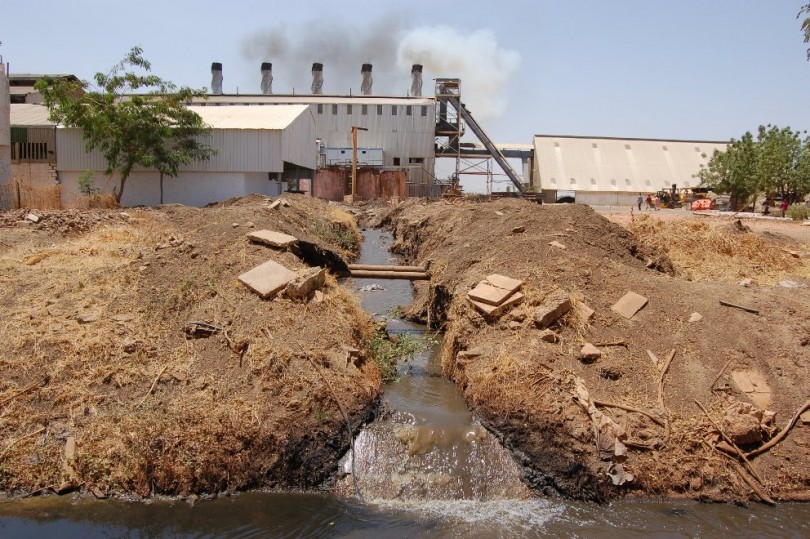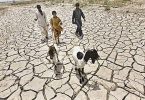In the history of mankind, natural water resources have almost always been the mainspring of civilization. Being an indispensible resource, human civilizations engineered methods to harvest, store and utilize water. In addition, water bodies have served as reservoirs to dump waste material, mainly owing to the concept that flowing water will replenish itself downstream by dilution. Accordingly, there has been ruthless and unchecked discharge of waste material into natural water bodies. Exponential booming of human population has further exacerbated the stress on water resources, causing a reduction in their capability to dispose waste material merely by dilution. There is no more downstream!
Consequently, water pollution has emerged as one of the toughest challenges for the survival of mankind. The literal meaning of the word pollution is ‘destruction of purity’. In a broader sense, water pollution refers to any undesirable change in the composition and/or temperature of natural water resources that renders them inappropriate for best usage.
Pollutant is any such substance or living organism present in quantities, making water unfit for a specific purpose. There is a wide array of pollutants with their specific entry points and effects. To describe the profile of every pollutant is beyond the scope of this short article, so the nature, effects and sources of major pollutant categories will be described in brief.
Non-Toxic Pollutants
Most of these substances, entering through both natural and anthropogenic sources, are the natural ingredient of aquatic ecosystems, some being rather critical. They become pollutants when their concentrations cross a certain threshold to render them harmful. Examples include biodegradable organic materials, nutrients and minerals. Sources of these non-toxic organic molecules are industrial wastes, sewage water, run-off water from livestock grazing farms and natural production due to metabolic activities of aquatic organisms. Decomposition of organic molecules causes depletion of dissolved oxygen, threatening the survival of aquatic organisms. Moreover, suspended organic matter increases water turbidity and reduces light penetration to carry out photosynthesis, thus directly affecting primary productivity of the ecosystem, i.e., the amount of food produced by plants. Plants are the food producers in every ecosystem. If their photosynthesis is hampered, the entire food chain suffers.
Nitrates and phosphates are a natural part of an aquatic ecosystem and essential for its primary productivity. However, excessive amounts of nitrates and phosphates cause eutrophication, and resultant preponderance of nuisance species forming algal blooms. These algal blooms cover the water surface thereby blocking sunlight. They also disrupt the food chain and disturb normal functioning of the ecosystem; some of these algae may also release toxins, harmful for aquatic organisms and humans. Agricultural runoff is the main contributor to excessive nitrates and phosphates in surface waters.
Toxic Pollutants
This category includes substances, which are toxic to living organisms, either lethally or sub lethally. Most of these are not a natural part of aquatic ecosystem, rather, only introduced through human activities. Examples include chemical compounds from industries, pesticides, detergents, heavy metals, oil and radioactive materials. It is estimated that every year around 300 billion kilograms of synthetic compounds from agricultural, industrial and consumer products are routed to natural freshwater.
It is estimated that every year around 300 billion kilograms of synthetic compounds from agricultural, industrial and consumer products are routed to natural freshwater.
Many industrial chemicals, metals and pesticides are toxic to aquatic animals and humans, often affecting sensitive organs and the neuroendocrine system. Moreover, many of these are responsible for developmental anomalies by interfering with the developmental processes in various types of animals and humans.
Most of these substances are non-biodegradable, thereby persisting in the environment for a long time and accumulating in the bodies of exposed animals. Their route of exposure to humans is by drinking contaminated water and/or consuming contaminated food, such as fish and shellfish.
Minamata disease outbreak among the residents of Minamata Bay Japan is one of the worst examples of industrial pollution. This neurological syndrome was caused by prolonged consumption of the mercury-contaminated fish and shellfish from the waters of Minamata Bay, polluted by wastewater of a chemical factory named “Chisso”.
Detergents, mainly introduced through sewage water, alter the physical characteristics of water and affect aquatic animals as well. Detergents lower the surface tension of water causing an increased uptake of other toxins by aquatic animals, exposing them to a greater risk of mortality. On the other hand, detergents themselves are directly lethal to fish by damaging their gills and by destroying the protective mucus layer on their external surface. Detergents may also kill fish eggs. Most of the detergents release phosphates upon breakdown, resulting into formation of nuisance algal blooms.
Oil is mainly considered a problem of marine waters, but many freshwater bodies also suffer from this kind of pollution due to oil spills, natural leakage of oil from rocks or from recreational activities of humans. Oil floats on the surface of water and prevents the dissolution of oxygen, a critical feature for the sustenance and productivity of an aquatic ecosystem. It also deteriorates the drinking and aesthetic qualities of water. Oil-contaminated water is detrimental for almost all forms of aquatic life from plants to fishes.
Radioactive isotopes accumulate in the food chain. They emit radiations upon decay, which cause damage to body tissues and DNA, often leading to cancer and certain developmental malformations.
Siltation
Siltation of water refers to an addition of silt, i.e., fine granular material from rock or soil to a water body. These particles remain suspended in water, giving it a turbid (murky) appearance. Gradually they settle down to the river or lake bed to form a fine layer of sediments. Natural siltation mainly arising from hill degradation and other forms of soil erosion has always been occurring. However, anthropogenic activities such as deforestation, intensive agriculture, housing schemes, and road building projects which leave large dumps of soil and debris have caused a tremendous increase in the addition of suspended solids to natural water bodies.
In a study, severe dissolved oxygen depletion over a reach of 62km was observed between Lahore and Baloki, indicating intense pollutant load.
Increased sediment load is often the most visible form of water pollution. Accumulation of suspended particles in water reduces the depth of light penetration, cutting down the rate of photosynthesis, and hence primary productivity. Aquatic animals face multiple problems such as suffocation and mate recognition. Turbidity also renders water unfit for industrial usage and destroys its recreational quality. Sedimentation destroys the spawning sites and habitat of many species.
Increased siltation progressively elevates the stream beds, leading to a decrease in their capacity to allow increased water flow. Sediments also gradually fill up the dams and water reservoirs, reducing their water-storage capacity. Together, it causes increased chances of flooding, and resulting socioeconomic and ecological losses.
Thermal Pollutants
Processes which alter the ambient temperature of a water body are categorized as thermal pollutants. Some industries and power plants use natural waters as a coolant, and release the used warm waters back into natural water bodies, causing thermal pollution. This result into a decrease in dissolved oxygen content, an increase in the metabolism of aquatic species, faunal migration, and in severe instances, a massive fish kill may also occur particularly at the point of entry.
Biological Pollutants
This category includes disease-causing microbes mainly introduced through untreated sewage and surface runoff from intensive livestock grazing. They account for a large number of waterborne disease outbreaks and mortalities in humans.
Summary of Sources and Impacts on Humans
To sum up, the major sources of water pollutants are natural, industrial, sewage water, recreational, agricultural runoff containing fertilizers and pesticides, mining, deforestation, and nuclear wastes. These pollutants affect the life of aquatic animals as well as humans. Being the consumer of water and waterborne food, humans are prone to slightest alterations in aquatic systems.
The major sources of water pollutants are natural, industrial, sewage water, recreational, agricultural runoff containing fertilizers and pesticides, mining, deforestation, and nuclear wastes.
Water pollution renders the water unfit for various uses such as industrial, agricultural, fish harvesting, drinking, recreational, etc. Reduced fish catches due to mortalities and contamination have been implicated in major downfall of fishery industry in many areas worldwide, causing direct economic losses.
Destruction of water quality accounts for around 50 million human deaths per year worldwide, warranting accurate diagnosis of the source and effective corrective actions.
Main routes of pollutant exposure to human body include physical contact or drinking of contaminated water, and intake of contaminated waterborne food. Destruction of water quality accounts for around 50 million human deaths per year worldwide, warranting accurate diagnosis of the source and effective corrective actions.
Groundwater Pollution
Groundwater pollution is also a matter of growing concern. Important sources of groundwater contamination include anthropogenic and natural dependency upon the geological material through which groundwater moves. The former recharge through contaminated river, use of wastewater for irrigation, improper handling and storing of household chemicals, irrigation channels coming from contaminated streams, leaching of contaminants from dumping or burial of solid wastes in the ground, leakage through underground or above ground storage tanks in industrial set up or houses, and leaching of pesticides and fertilizers from agricultural fields.
Environmental and Public Health Hazards in Pakistan
Water pollution has emerged as a serious environmental challenge in Pakistan. Quality of surface and groundwater is rapidly deteriorating. Around 40 percent of all reported ailments and casualties are attributed to poor water quality (Pakistan Council of Research in Water Resources report 2003-04). Indiscriminate use of agricultural fertilizers and pesticides, deforestation, and discharge of sewage and industrial wastes into freshwater are among the main factors to render natural water unfit at various places. Punjab alone generates 552.23 million cubic feet of wastewater per day, out of which only 22.11 million cubic feet is disposed after treatment (Japan International Cooperation Agency final report 2010).
Around 40 percent of all reported ailments and casualties are attributed to poor water quality (Pakistan Council of Research in Water Resources report 2003-04).
Among the most severely affected resources is River Ravi, which receives wastewater throughout its reach in Pakistan. There are 12 disposal stations under Water and Sanitation Agency (WASA), Lahore which directly discharge city waste into the river. In a study, severe dissolved oxygen depletion over a reach of 62km was observed between Lahore and Baloki, indicating intense pollutant load. During reduced flow in winter season, pollutants concentrate, and the river appears as a wastewater drain. Both the water and fish of River Ravi are highly dangerous for human consumption.
Groundwater which is the major source of drinking water in Pakistan is also often severely contaminated. Concentration of toxic metals is found to be above acceptable levels at many places. Leather tanneries are of special concern as these are responsible for the addition of arsenic into groundwater. Arsenic is toxic to humans and long-term exposures can lead to serious health consequences, such as cancer.
Adding to the gravity of the situation is the fact that large proportion of wastewater is directed towards use in irrigation, without receiving any treatment. In a survey encompassing 12 cities and towns of South Punjab, almost all of the sewage water was found to be used for irrigation purposes (International Water Management Institute). 26 percent of Pakistan’s vegetables are grown using wastewater, which is indeed alarming. It indicates that water pollutants are reaching the consumer dining table either way around.
Another serious threat to the quality of surface waters is the intensification of soil erosion and resulting siltation, leading to poor water quality and increased chances of floods. With ongoing climate change, this is going to be one of the most serious threats for the health of aquatic ecosystems.
Mitigation
The detrimental effects of various types of pollutants on aquatic ecosystems, human health and socioeconomics have been a matter of grave concern since quite long. Corrective actions have also been taken at various places in the world with varying degrees of success.
The Government of Pakistan formulated a Pakistan Environmental Protection Act in 1997 (PEPA 97), providing comprehensive legislative authority related to environmental concerns. Section 11 of the PEPA 97 deals with the “prohibition of certain discharges or emissions”. Under subsection (1), it elaborates “subject to the provisions of this Act and the rules and regulations no person shall discharge or emit or allow the discharge or emission of any effluent or waste or air pollutant or noise in an amount, concentration or level which is in excess of the National Environmental Quality Standards” (NEQs), or other standards. Subsection (2) authorizes the federal government to “levy a pollution charge on any person who contravenes or fails to comply with the provisions of subsection (1)”.
Although strong legislative authorities have been conferred to regulatory bodies, the state of implementation is unfortunately gloomy. There is an open violation of PEPA 97, both by government-run municipalities and the private sector. Perhaps the greatest challenge in combating water pollution is governance failure. Owing to unstable political system, massive corruption and lack of accountability, the country is not conducive to the implementation of rules and regulations.
26 percent of Pakistan’s vegetables are grown using wastewater, which is indeed alarming.
Vigilant management practices, wise land use, and social awareness programs must be undertaken to minimize the entry of various pollutants into natural waters. Extensive reforestation campaigns, promotion of the use of biological resorbent in catching metals from industrial effluents, use of treated wastewater as a part of integrated water resource management, recycling of solid wastes, wise selection of pesticides and integrated pest management schemes can cause reduction in the contamination of waters. Cooling ponds can be used to avoid thermal pollution. Use of green infrastructure i.e. systems and practices that use or mimic natural processes must be encouraged.
The cost of an unwise attitude towards the purity of this precious resource is very high. Restoration of our aquatic ecosystems is a mutual obligation, which all of us need to own and fulfill, because as they say, “you never know the worth of water until the well runs dry”.







